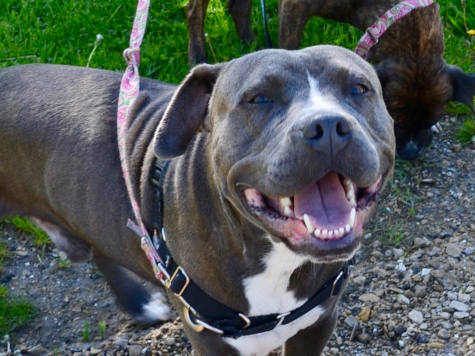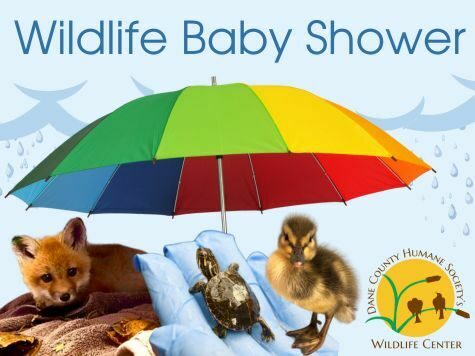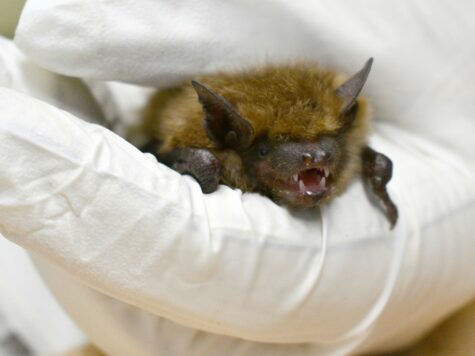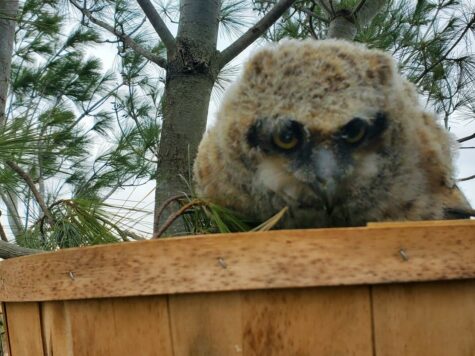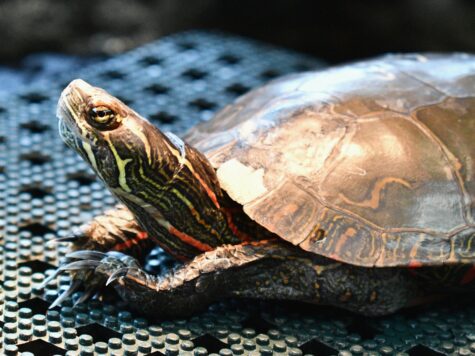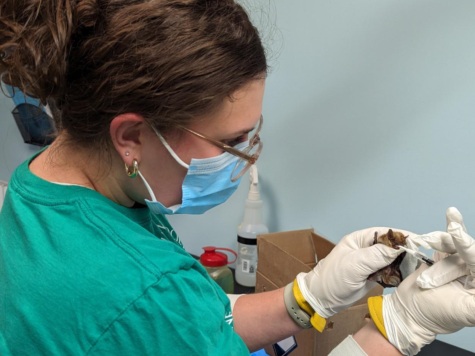Your generosity helps ensure that every healthy and treatable animal can stay with us for as long as it takes to get healthy and find a new home.
Baron made the journey from Alabama to DCHS in January. Eager to make new friends, this polite and well-behaved terrier mix seemed like he’d quickly be ready for adoption.
DCHS veterinarians examined Baron shortly upon arrival and noticed something was wrong. Baron had entropion in one of his eyes, a painful condition that makes his eyelid turn in, but we soon found out that this wasn’t Baron’s greatest challenge.
During the exam, we also discovered that Baron had a severe heart murmur. Chest X-rays showed his heart was enlarged and one of his heart valves was abnormal. Knowing Baron’s journey at DCHS was likely to be a long one, he went to a loving foster home so he could be more comfortable.
We quickly scheduled a consult with UW Veterinary Care’s Cardiology Department. At his exam, Baron underwent tests that confirmed the diagnosis of a pulmonic stenosis, a birth defect that was obstructing blood flow in the heart and causing it to work too hard.
Without treatment, Baron’s diagnosis was grim. He was in great danger of developing congestive heart failure or his heart suddenly failing. The only way to save Baron’s life was through a costly surgery called a double balloon valvuloplasty.
It is only thanks to donors like you that DCHS can help animals with serious medical conditions get the care they need. We were able to schedule Baron’s surgery, and he came through with flying colors. He rested in his foster home and continued to improve.
With his heart surgery behind him, Baron’s next step was entropion surgery at DCHS. The surgery went well, but his recovery was not over yet.
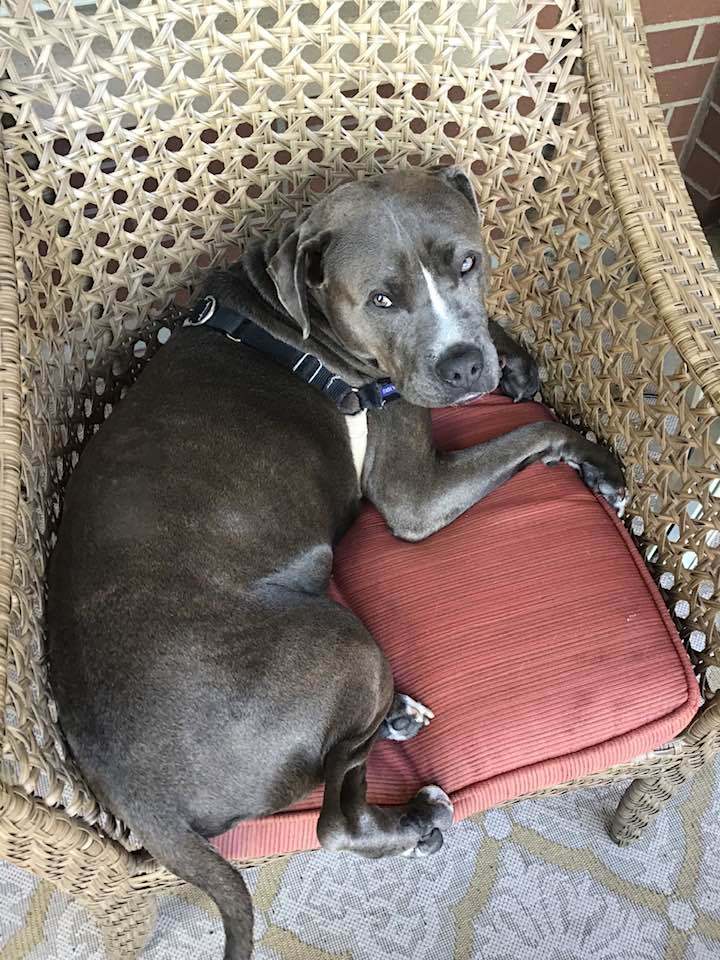
At a recheck exam, we repeated bloodwork and discovered Baron was now heartworm positive. It was another setback for Baron.
We began Baron’s heartworm treatment, a painful series of injections. After a long recovery and eight months in foster, Baron was finally healthy, happy and ready to find his forever home.
“My family was drawn to Baron immediately after seeing him on the website,” says Sarah. “The fact that he was older, sensitive and had lived through some difficult medical situations all contributed to our desire to meet him and invite him into our family.”
Sarah made an appointment to meet Baron and quickly fell in love. That day Baron became a part of her family. “I literally love Baron. He is a gentle, kind soul and is a perfect addition to our family. My husband often says that it really could have been no other dog, but Baron, that would have worked for us,” said Sarah.
When you give by December 31, 2020, your gift will be doubled up to $15,000 thanks to a matching gift from the Don and Marilyn Anderson Foundation.
Your support of DCHS gives thousands of animals a place to rest, recover and grow every year. Please make your donation by December 31st and make twice the impact for animals just like Baron.
